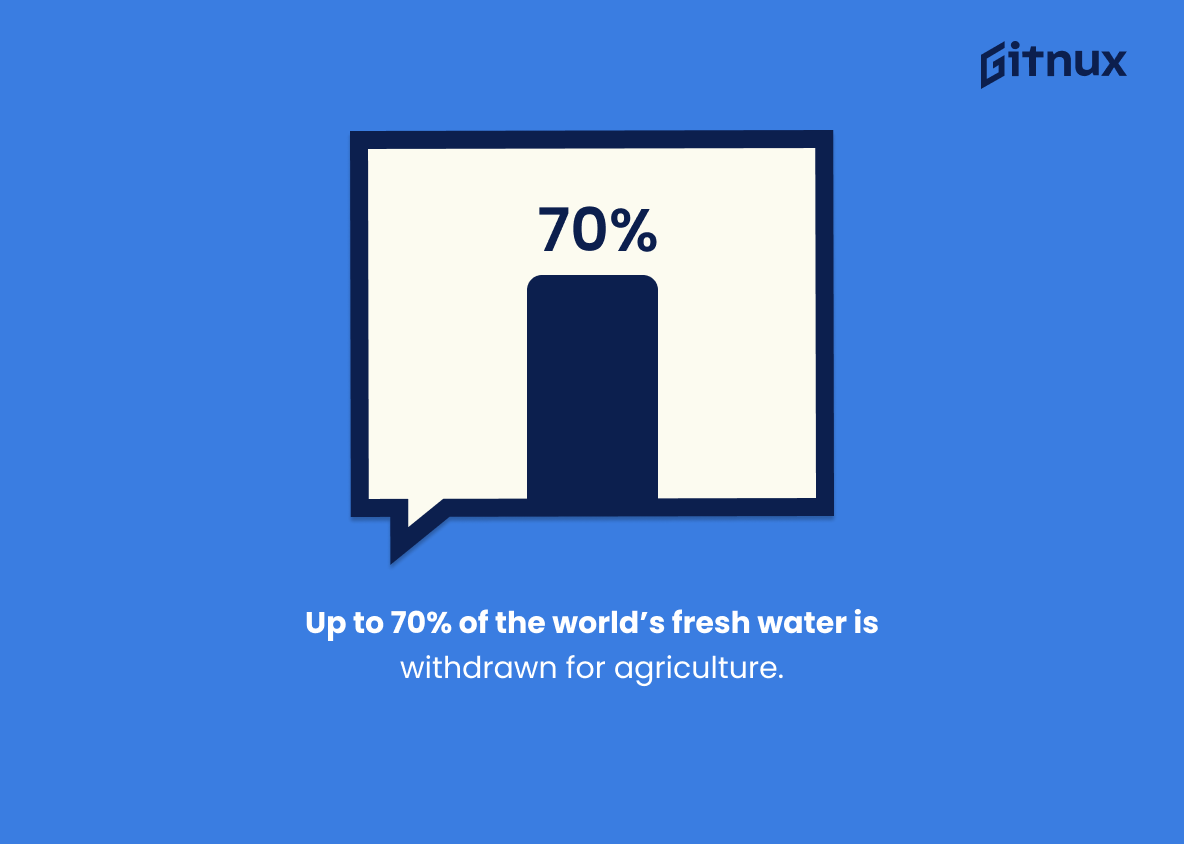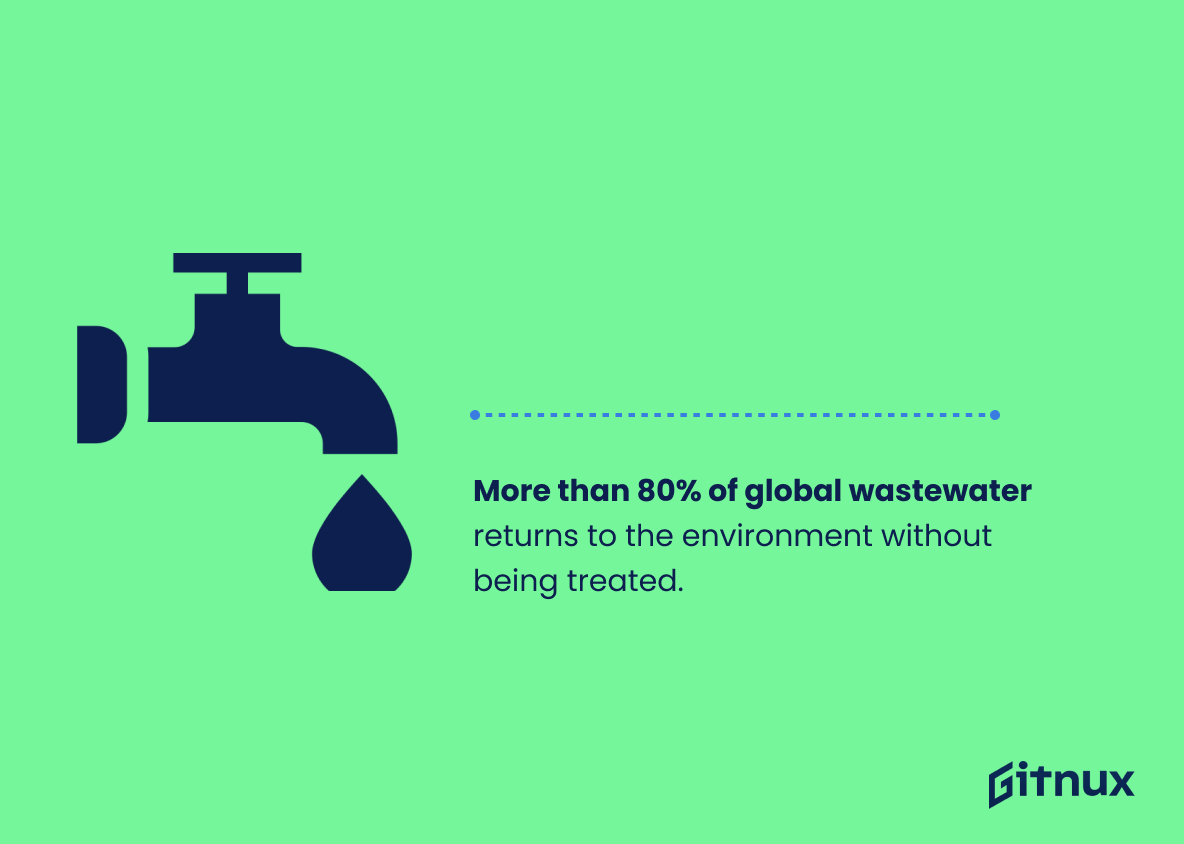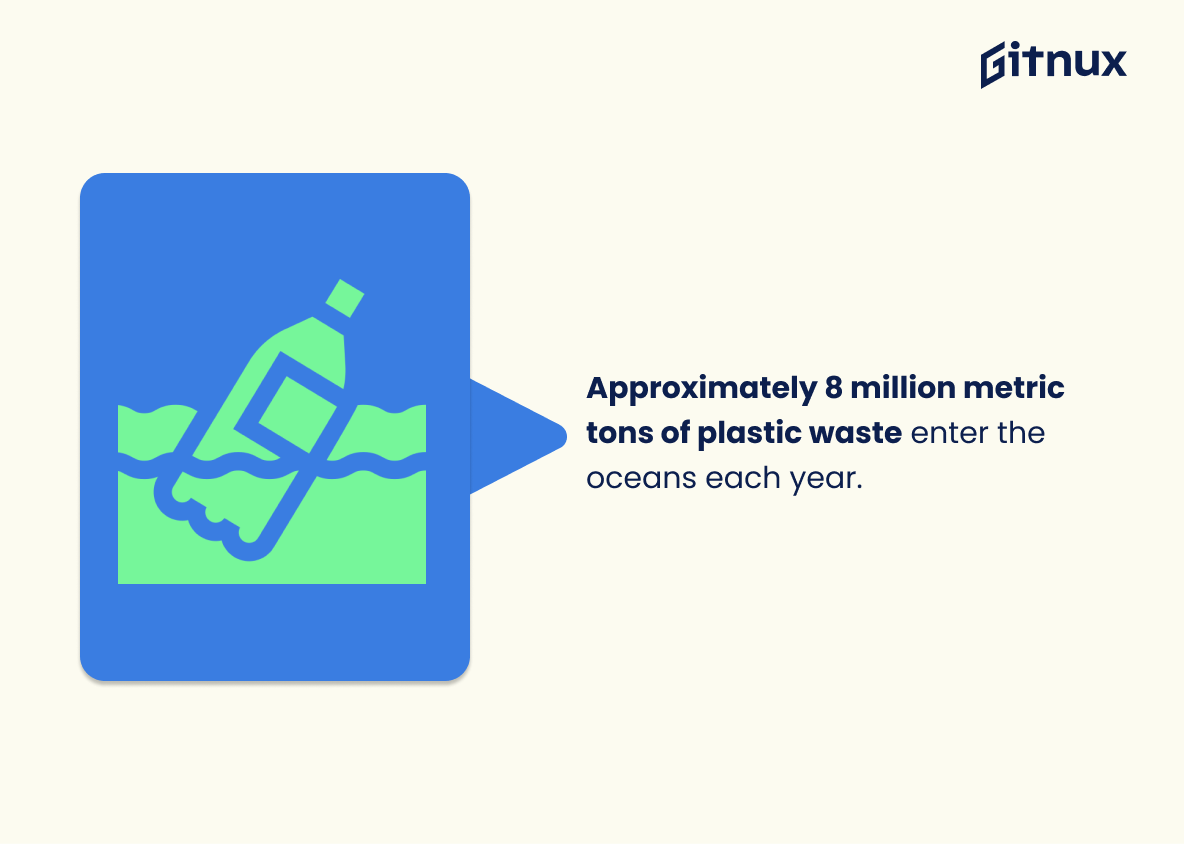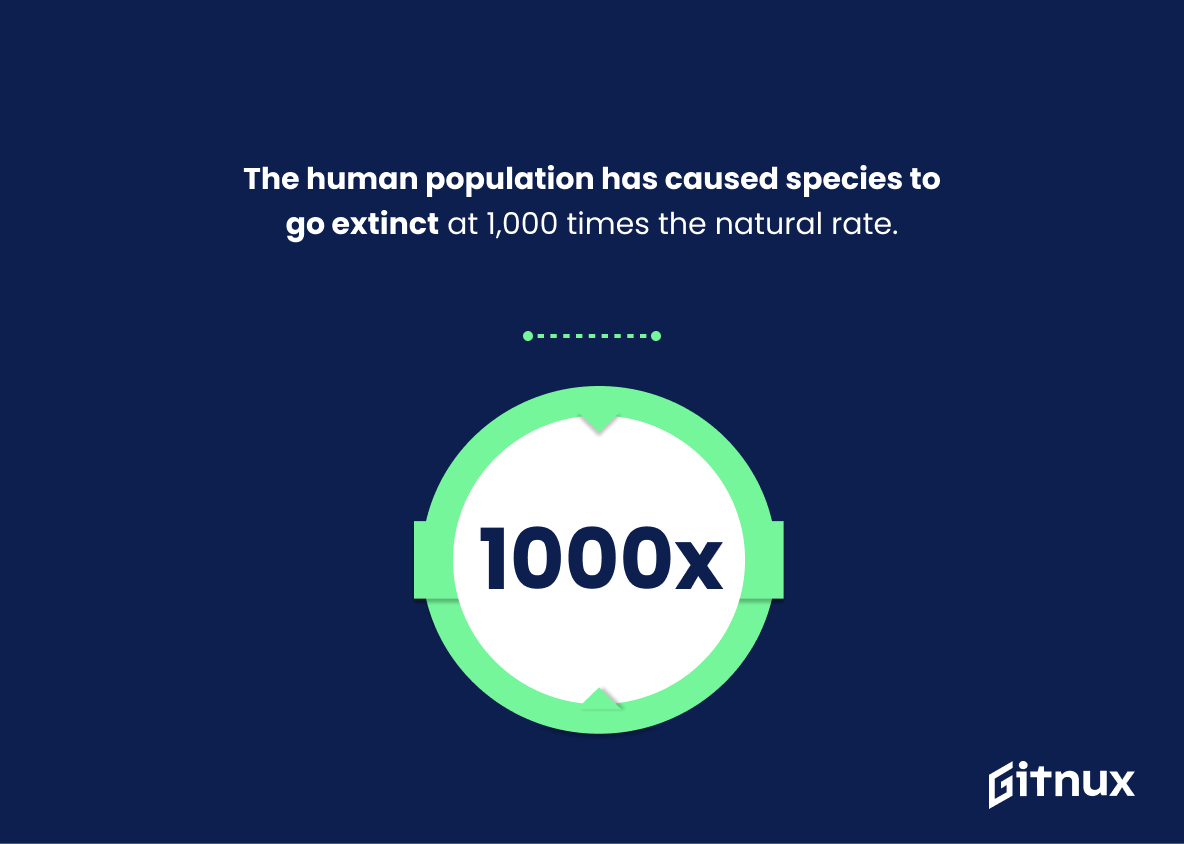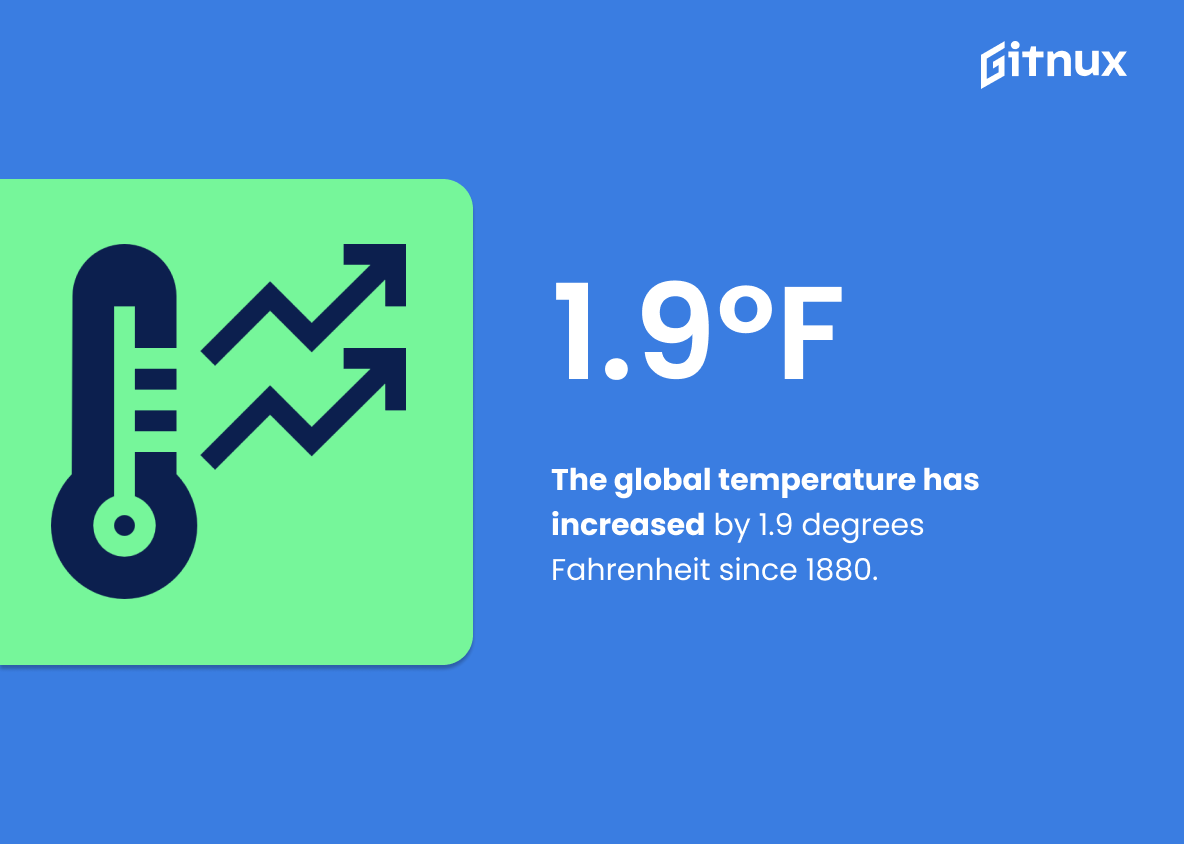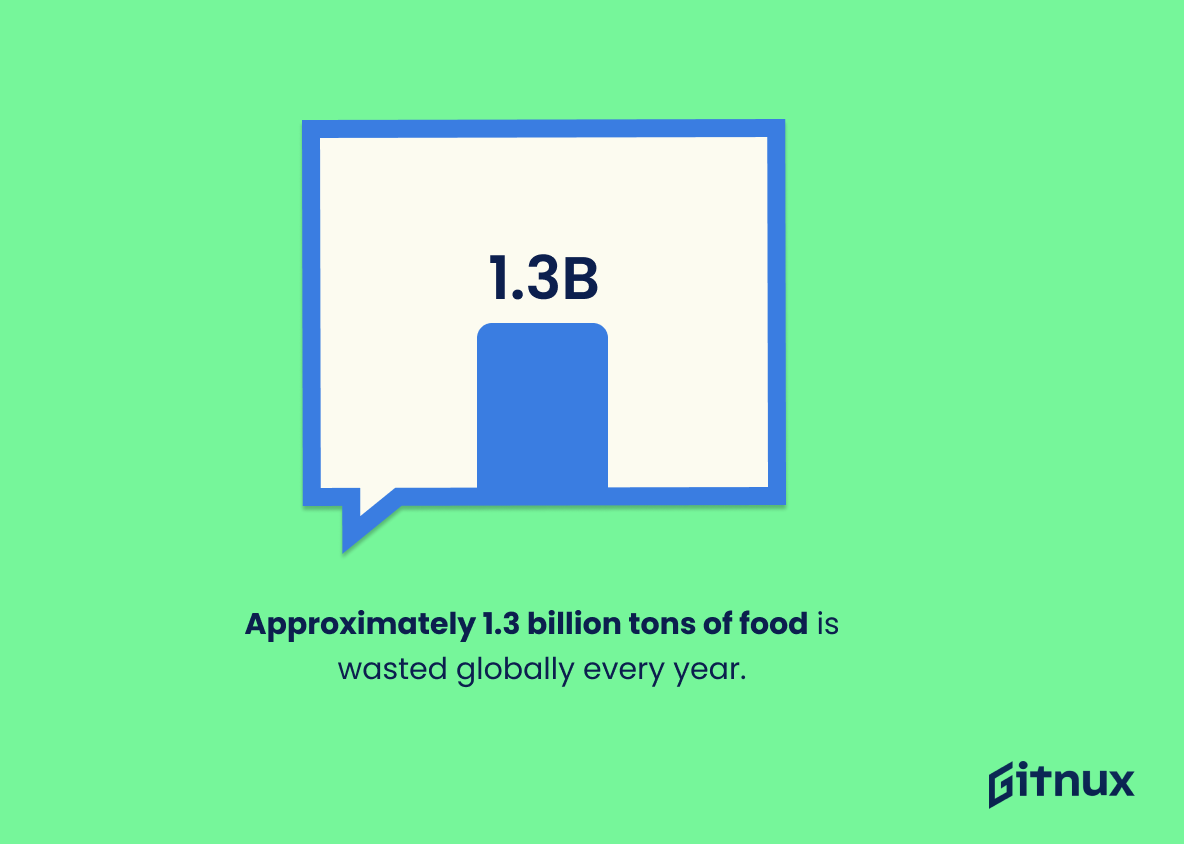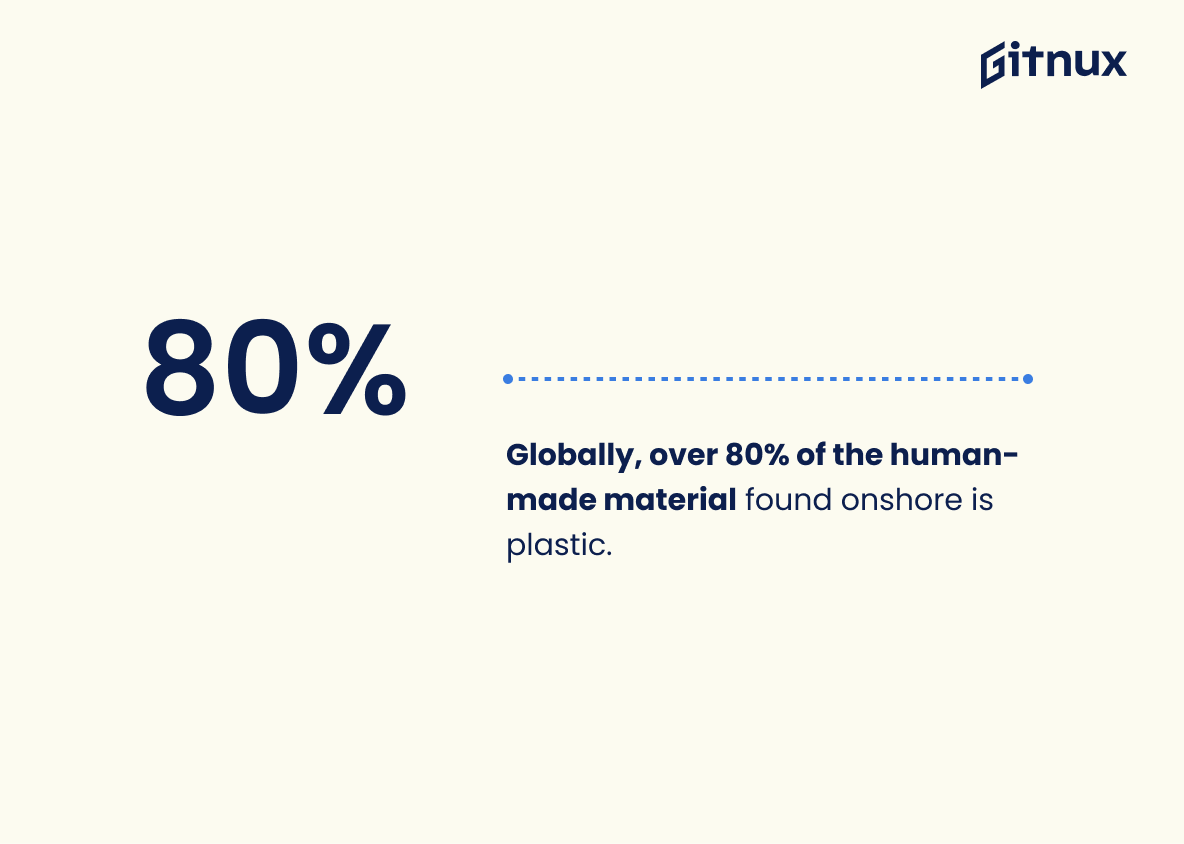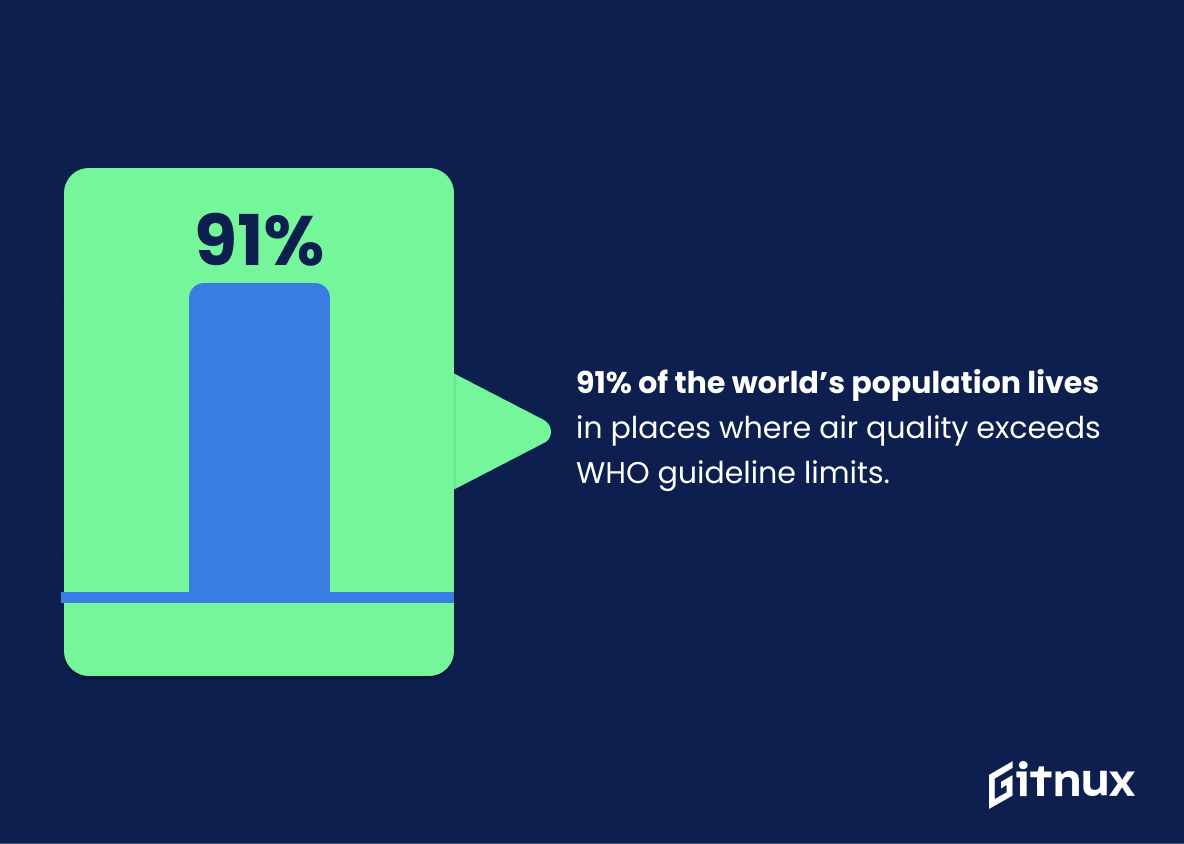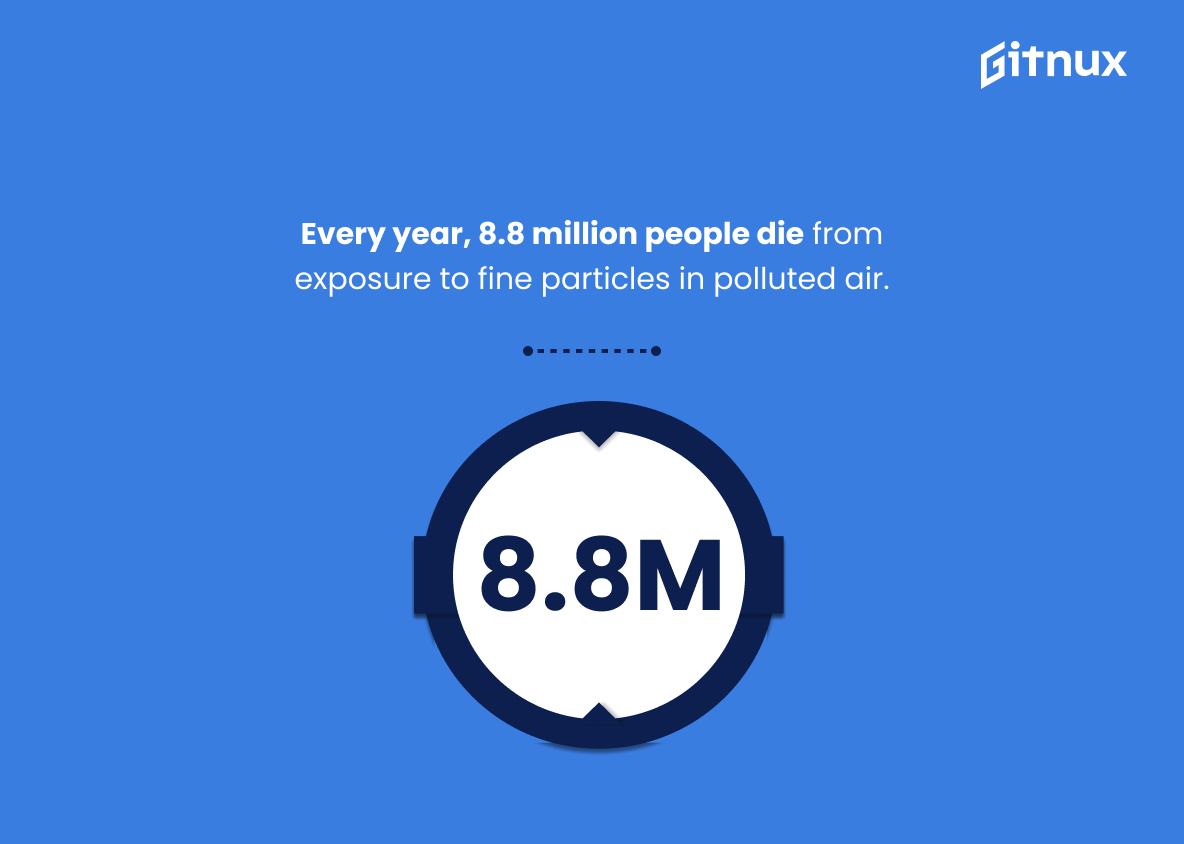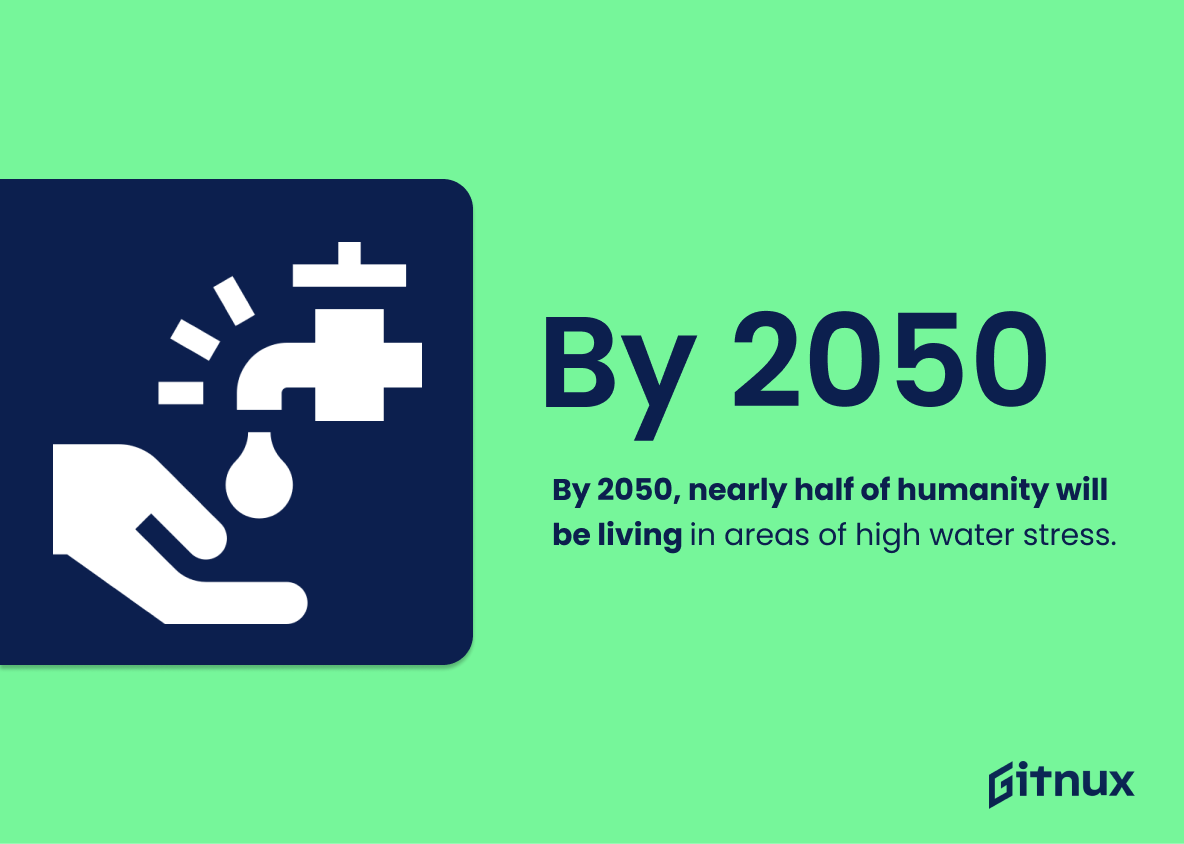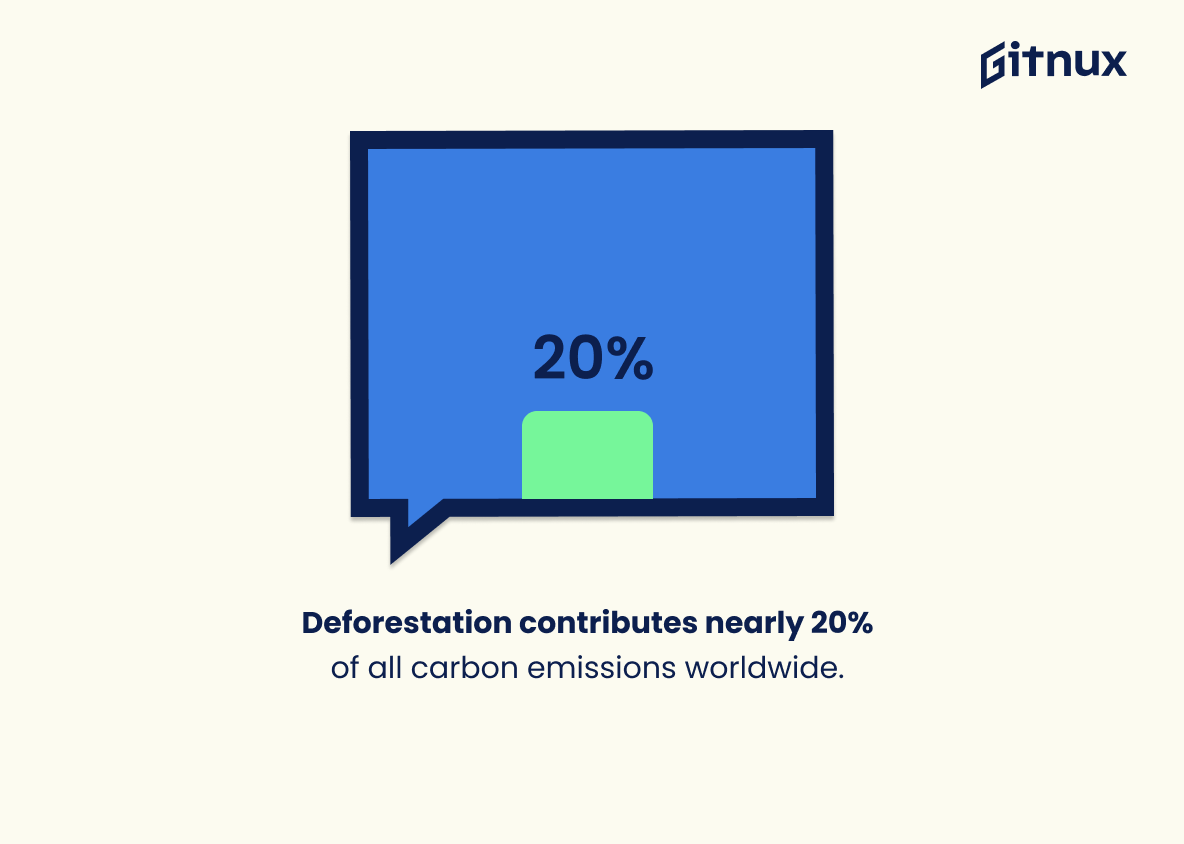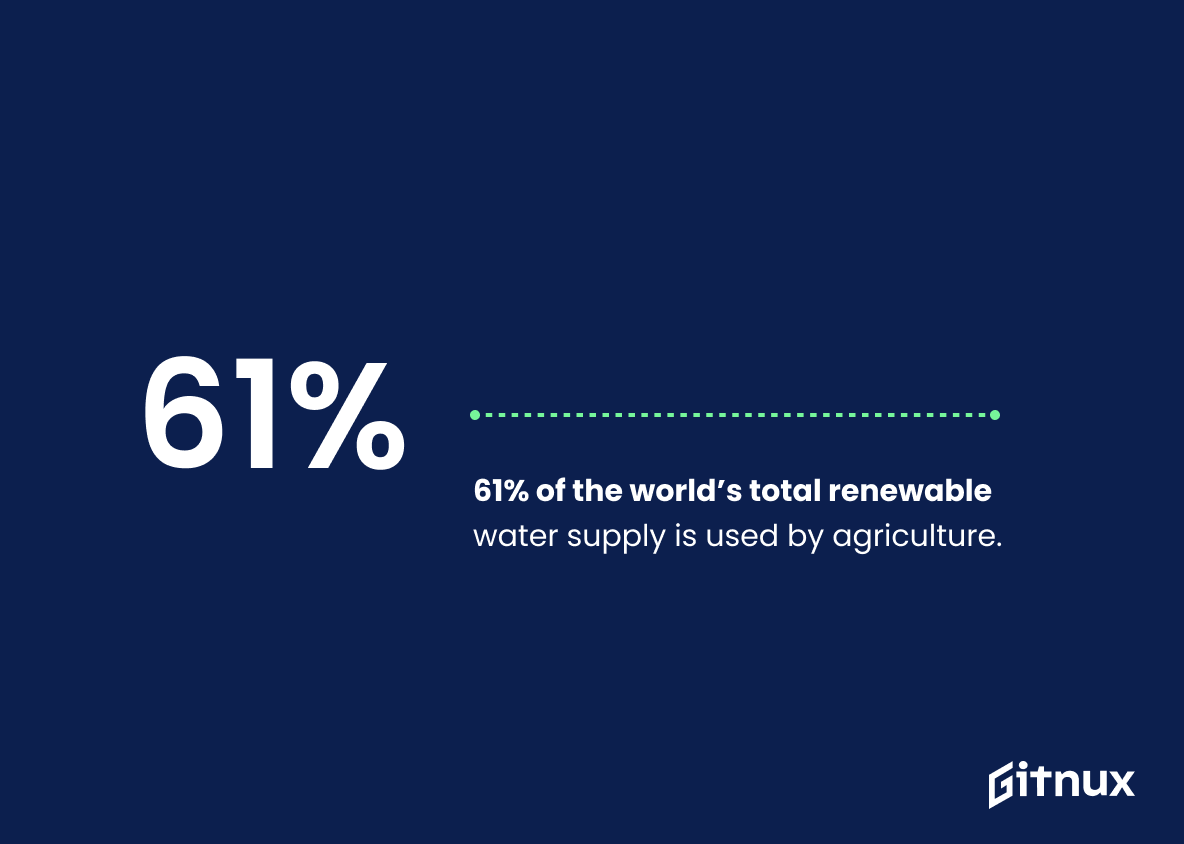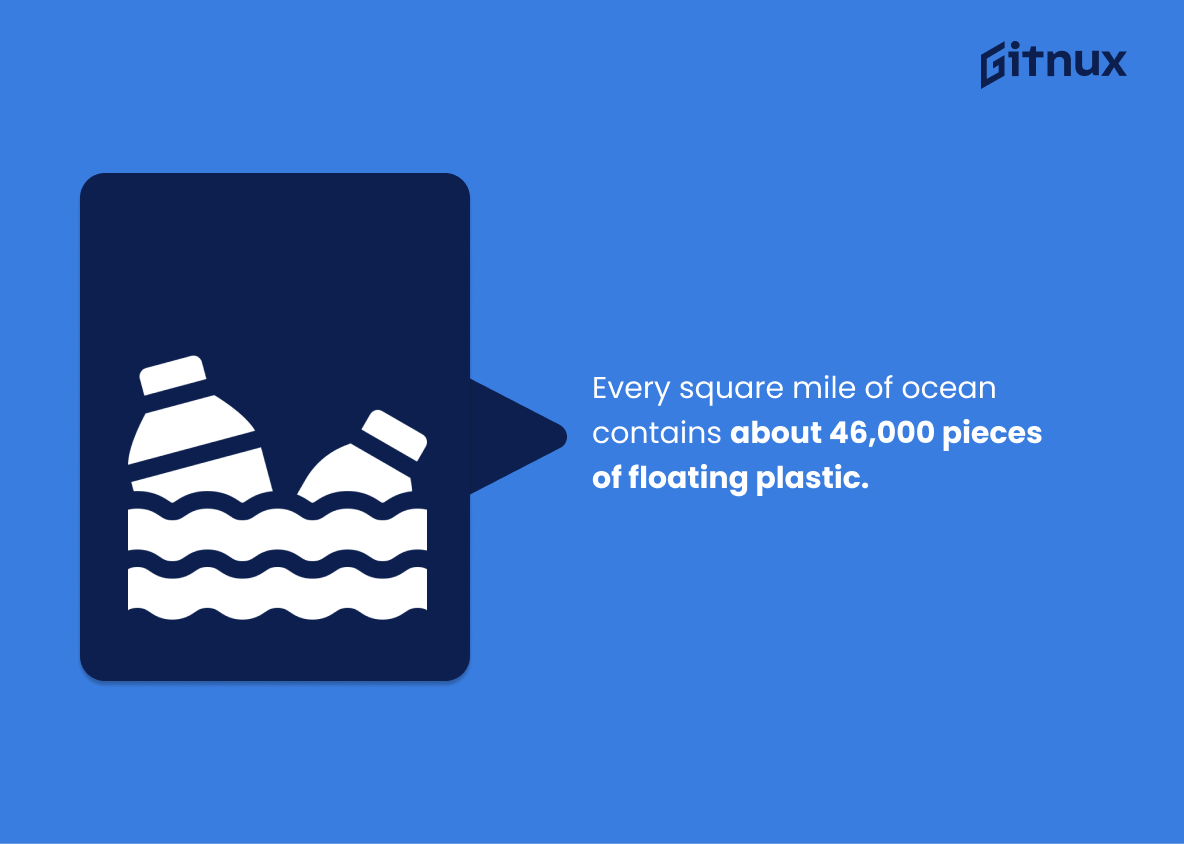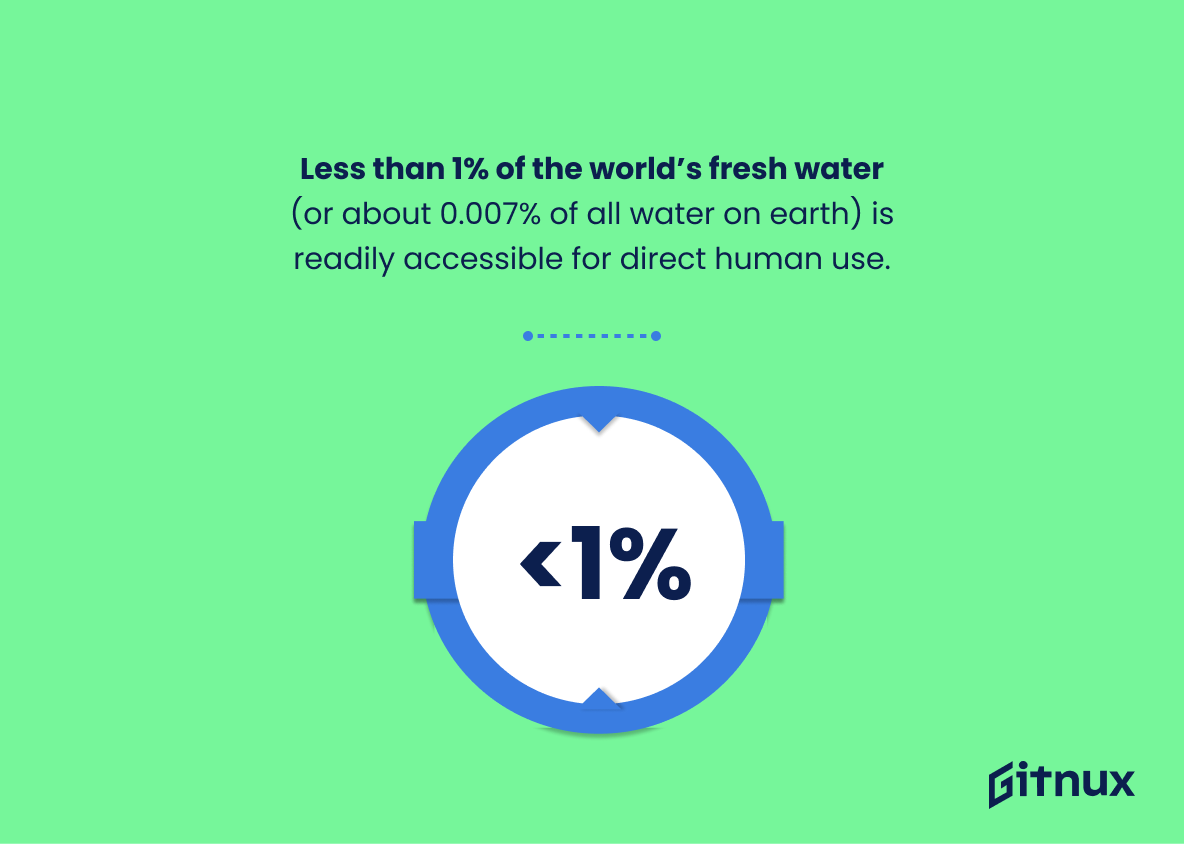In this constantly evolving world, environmental issues are rapidly becoming a matter of grave concern. With ongoing discussions, debates, and deliberations on this subject, it’s essential we augment our conversations with veritable facts and figures. This blog post delves into the crucial aspect of environmental issues statistics. We’ll not only explore various environmental problems currently plagging our planet but also illuminate your understanding with recent and relevant statistics.
From air and water pollution to climate change and biodiversity loss, we aim to present you with an big-picture understanding constructed on a statistical foundation. Comprehending these figures can shed light on the severity of the situation and help us take informed steps towards conservation and sustainability. Let’s plunge into these number-driven insights and unfold the story they tell about our planet’s health.
The Latest Environmental Issues Statistics Unveiled
More than 200,000 people could die each year in the U.S. due to air pollution by 2100 if no change is made.
The chilling figure of 200,000 potential annual deaths in the U.S. due to air pollution by 2100 casts a dark shadow in the field of environmental issues statistics that should not be overlooked. This grim prediction serves as a ticking time bomb, underscoring the urgent need for serious changes in environmental policy and individual behaviors. Not only does it highlight the immediate health risks associated with air pollution, but it underscores the longevity and depth of these risks if we continue down our current path.
In the tapestry of environmental discussions, this statistic is a powerful thread, warning us of the cost in human lives if we don’t prioritize cleaner and more sustainable practices. It’s an unswerving beacon, guiding the blog’s narrative about the tangible, life-and-death consequences of our impaired environmental dealings.
Up to 70% of the world’s fresh water is withdrawn for agriculture.
Understanding the quantifiable degree of global fresh water consumed by agriculture offers a stark revelation about resource allocation and environmental stress. Picturing that agriculture drains nearly 70% of the world’s fresh water paints a vivid portrait of the acute pressure this vital sector places on the planet’s delicate ecological equilibrium.
A disquieting realization further amplified by fresh water scarcity already afflicting several regions worldwide. Thus, this nugget of data alludes to an urgent call-to-action for sustainable farming practices and innovative irrigation methods, propelling a consistent undertone throughout the blog post on Environmental Issues Statistics.
More than 80% of global wastewater returns to the environment without being treated.
Highlighting the startling figure that over 80% of global wastewater returns to the environment untreated uncovers a deeply troubling aspect of human-environment interaction. This statistic punctures the heart of the environmental issues debate, revealing a critical area where our global society is falling short. Weaving this alarming statistic into the narrative underscores the severity of water pollution and inefficiency of wastewater management.
Its relevance extends beyond just water concerns, contributing to other environmental issues like loss of biodiversity and health hazards. Therefore, it magnifies a need for urgent, comprehensive actions towards sustainable wastewater management while instigating a discussion on major environmental challenges.
Approximately 8 million metric tons of plastic waste enter the oceans each year.
Drifting towards an ecological precipice, our oceans grapple with an onslaught of nearly 8 million metric tons of plastic waste annually. Brighten your comprehension of these environmental issues by considering this sinister statistic. Imagine, if you will, the monumental grandeur of the pyramids of Egypt – immense monoliths made by human hands. Realize now, that every year, humanity ‘builds’ a rival to these imposing structures not in stone, but in plastic waste deposited into our world’s oceans.
This fact dramatizes the urgency and gravity of the pollution we produce and highlights our urgent need for sustainable reform. In the context of this blog post about Environmental Issues Statistics, the mentioned data is therefore pivotal, providing both scale and context vis-à-vis human waste production, while underscoring the mounting environmental peril our oceans – and by extension, we – face.
The human population has caused species to go extinct at 1,000 times the natural rate.
Highlighting the dramatic statistic that human activity escalates extinction rates to a staggering 1,000 times higher than natural levels serves as a stark illustration of the profound impact we are having on our planet. In the sphere of environmental issues, this metric underscores just how urgently we need to address our destructive habits, as it hinting our dire invasion into the delicate tapestry of life on Earth.
It amplifies the critical need for immediate action, shining light on our accountability in shaping our environment’s future. The sheer scale conveyed by this statistic may serve as a wake-up call, spurring reader engagement in the environmental conversations and initiatives discussed within the rest of the blog post. The chilling numbers also potentially pave the way for more in-depth discussions about biodiversity and conservation strategies, encouraging readers to actively participate in the stewardship of our planet.
The global temperature has increased by 1.9 degrees Fahrenheit since 1880.
Underlining our blog post on Environmental Issues Statistics is the stark truth that since 1880, our planet has warmed up by a significant margin of 1.9 degrees Fahrenheit. This isn’t just a dauntingly impressive rise in a global thermostat, but it’s also a distressing whisper of an escalating environmental crisis.
Consider this, although the rise might appear minute, when translated to planetary scales, it carries profound consequences. Enhanced heatwaves, intensified natural disasters, melting ice caps, and rising sea levels, all are symptomatic of this relatively minor rise in temperature, dotting our planet with broad strokes of distress.
Evidencing the trajectory of human-induced climate change, this nugget of information offers critical insights into the severity of the issue and serves as a foundation for our discourse on environmental statistics. Henceforth, every data point and statistic shared within this blog post circles back to this temperature rise, shedding light on diverse environmental issues under a holistic umbrella of climate change. Thus, the statistic underscores our collective responsibility to implement sustainable practices, for its in these numbers we discern the portrait of our planet’s future.
Approximately 1.3 billion tons of food is wasted globally every year.
Reflecting upon the monumental statistic of approximately 1.3 billion tons of food wasted globally every year, one is compelled to consider the deep-seated, intricate link it holds with environmental degradation. Interlocking threads tie this divisive waste to significant environmental issues, underscoring its relevance to the narrative thread of Environmental Issues Statistics.
Envision the wasted food as an iceberg. Above the surface, it appears as a pressing but singular issue. Yet, beneath the waterline, the bulk of the iceberg reveals a disturbingly wide array of environmental implications. This colossal food wastage echoes through the environment in the form of greenhouse gases from decomposition. One cannot ignore its tie to unnecessary water utilization and deforestation for agricultural purposes, steepening the path towards climate devastation.
On this global stage, it’s more than just provisions being squandered. This statistic magnifies the ongoing tragedy of precious resources misuse, further rendering it vital to discussions about environmental crisis. Chewing on this digit drives home the gravity of situation, portraying a facet of environmental problems that’s often overlooked, yet tangibly resonates with our daily lives. Paints quite the alarming silhouette on the backdrop of environmental issues, doesn’t it?
Globally, over 80% of the human-made material found onshore is plastic.
Imagining an increasingly plastic world inevitably sets off alarms in terms of environmental concerns. The unsettling statistic, stating that over 80% of human-made material found onshore is plastic, underscores the severity of global plastic pollution. Notably, it slices through the thick layers of complexity, showcasing our inordinate reliance on plastic and the consequential, mounting pressure on our ecosystem.
A peep into this figure is an eye-opener, highlighting the enormity of the issue and stimulating thoughts about sustainable materials, waste management, and the urgency of eco-conscious living. Beware, it is not science fiction, but a precarious plastic reality we must address in our environmental discourse.
91% of the world’s population lives in places where air quality exceeds WHO guideline limits.
Breathing life into the stark realities of the global environmental situation, this startling statistic – 91% of the world’s population living in areas where air quality dips below the WHO’s recommended guidelines – essentially paints an unfiltered portrait of the air pollution crisis we currently face. As a significant wake-up call, this percentage elucidates the massive scale and severity of air pollution’s impact.
Serving as one of the pillars of environmental issues today, it nudges awareness and drives dialogue about sustainable policies and practices. Encapsulating a global issue in one jarring percentage, this figure lights a path for readers to comprehend and confront the reality of air pollution in the discourse about environmental issues.
Every year, 8.8 million people die from exposure to fine particles in polluted air.
Alarming doesn’t even begin to cover it when processing the reprehensible figure of 8.8 million annual deaths attributed to exposure from fine particles in polluted air. Imagine a city teeming with people, thrumming with life, now vacant – the population decimated not by a cataclysm, but by the air we breathe. This is the chilling reality that underscores why we must not merely gloss over Environmental Issues Statistics, but humbly internalize them. It is a declaration in tones both clear and unambiguous, that our collective dismissal or ignorance towards environmental degradation has entered the realm of life and death.
By highlighting this grave statistic in a blog post about Environmental Issues, we wrench the narrative from abstract bar charts and faceless figures into a stark, poignant reality – environment is no longer a detached scientific concern, it is an urgent health crisis impacting millions. Drawing the connection between our actions and their consequences, we endow readers with first, the understanding, then, the responsibility to make a change. Indeed, that single statistic is more than a stat, it’s a call to action.
By 2050, nearly half of humanity will be living in areas of high water stress.
Navigating through the plethora of Environmental Issues Stats, one stunner that commands immediate attention hints at our foreseeable future: “By 2050, nearly half of humanity will be living in areas of high water stress.” A look at this forecast paints a rather grim picture of our planet’s welfare, casting a shadow over the bliss of modern living with its quiet yet persistent threat of water scarcity.
Think of it as a ticking time bomb. Each ticking second represents an ever-growing number of individuals, communities and societies being pushed into an undesirable realm devoid of one of life’s essentials – water. This projection not only underscores the severity of water scarcity, but also catapults environment conservation efforts to the vanguard of global priorities.
Embedded in this statistic are the echoes of millions teetering on the brink of water wars, forced migrations, escalated poverty and the inevitable ecosystem collapse. It is a brutal reminder of how our treatment of the blue planet determines its hospitality towards us, and an urgent prompt to rethink and redesign our current frameworks and behaviors concerning water use and conservation.
Diving into the depths of these numbers reveals the reality that we’re on borrowed time – and there’s no time like the present to mitigate this impending crisis. The future we save may be our own.
Deforestation contributes nearly 20% of all carbon emissions worldwide.
Diving deeper into the world of environmental statistics, one cannot overlook the striking revelation that deforestation is responsible for nearly 20% of all carbon emissions worldwide. This information brings forth a hidden yet colossal contributor to global climate change, tracing how our woods and wilderness play a crucial part in managing the planet’s carbon composition.
It adds a new dimension to the narrative, emphasizing on not just emissions from industries or vehicles, but also underlining the environmental cost of reduced green cover. Thus, this statistic serves as a forestry fingerprint on the wider canvas of global carbon emissions, a crucial detail in our comprehensive understanding of environmental challenges.
61% of the world’s total renewable water supply is used by agriculture.
Highlighting the fact that 61% of the world’s total renewable water supply is utilized by agriculture dynamically underscores the earth’s enormous water footprint connected to our food production. Constructing a mosaic of environmental issues covered in this blog post, this statistic serves as a powerful reminder of the interplay between our diets, the methods we employ for growing food, and the sustainability of our most vital life-giving resource – water.
The scale of water used in agriculture also stresses the potential environmental impact from inefficient use or overuse, influencing not just quantity but also quality of this indispensable resource. In this light, the statistic underpins why technological innovation, policy intervention and changing practices in agricultural sector are crucial routes to nurture as we stride towards a more sustainable future.
In the wider planetary narrative of environmental resilience, this statistic signifies a pivot point, aligning our understanding of climate change, water scarcity, and food security.
Every square mile of ocean contains about 46,000 pieces of floating plastic.
Painting a stark image of the enormity of our environmental crisis, this statistic showcases the massive infiltration of plastic waste even in the parts of Earth where human presence is minimal. It underscores the extensive reach of pollution, demonstrating that even our oceans, comprising three quarters of the globe’s surface, are not immune from the effects of widespread disregard for sustainable practices.
In the grand scheme of environmental issues, this figure symbolizes a warning, an alert to the magnitude of our collective impact. It echoes a call to action, for changes in policy, in consumer behavior, and in our mindset towards waste and recycling. Above all, it’s a somber reminder of the legacy we are leaving for future generations; an ocean, not of abundant marine life or unspoiled wilderness, but populated by 46,000 pieces of floating plastic for every square mile.
Less than 1% of the world’s fresh water (or about 0.007% of all water on earth) is readily accessible for direct human use.
Underlining the startling figures behind humanity’s water usage, let’s delve into the profound importance of the fraction of accessible water on Earth. A mere 0.007% of all water available, falls under the category of readily usable freshwater. It’s a wakeup call for our species, emphasizing the critical scarcity of this life-giving substance. It underscores the urgency for comprehensive conservation strategies, effective water management and efficient use of this slender lifeline.
These diminutive digits should not only change perspectives but revolutionize behaviors, shaping sustainable approaches towards our relationship with the environment. Presented in the context of Environmental Issues Statistics, this significant data-point paints a compelling narrative of our environmental challenges and the path that lies ahead of us.
CO2 levels in the air are at their highest in 650,000 years.
Unearthing the statistic that ‘CO2 levels in the air are at their highest in 650,000 years’ paints an alarming and vivid picture of the urgency of addressing environmental issues. This piece of data doesn’t just reflect a footnote in the annals of environmental history, but shouts an alarm that echoes into the corners of our awareness. A crescendo in environmental dialogue, this data point underlines the drastic and unprecedented changes that our planet is undergoing.
When you consider this in relation to other climate statistics, it transforms into a compelling beacon, illustrating the severity of escalating carbon emissions which have a direct and substantial link to global warming. This understanding elevates the weight and scrutiny we should be placing on environmental initiatives, policies and sustainable practices.
In essence, this statistic serves not only as potent testimony of the environmental devastation, but also a call to arms. It highlights the importance of comprehensive, immediate action to reverse the upward trajectory of CO2 levels, so as to preserve our planet for future generations.
Every day, around 93% of the world’s children breathe air that is so polluted it puts their health and development at serious risk.
Looking at the metrics of mortality and morbidity around the world, this shocking statistic punctuates the narrative of a blog post on Environmental Issues Statistics. It vividly portrays the scale and severity of the air pollution problem, emphasizing its global impact. Indeed, when over nine out of every ten children—an overwhelming majority—are inhaling air laced with pollutants, it’s a potent health and development issue ringing alarm bells.
This fact alone serves as a critical call-to-action for the reader, reinforcing the urgent need to address environmental problems for the sake of future generations. This statistic eloquently quantifies the human cost of environmental degradation, giving the reader a perspective one cannot ignore.
On average, every person in the world contributes about four pounds of garbage per day.
Delving into the realm of Environmental Issue Statistics, one cannot overlook the startling volume of waste generated by humans across the globe. The figure sits at an astounding average of four pounds of garbage per person per day. This revelation serves as a concrete reminder of the staggering rate at which we are consuming and discarding. It is a barometer of mankind’s impact on the environment, indicative of the potential consequences we might face if we do not take action – such as landfills overflowing, profound pollution of our waterways, and ever-escalating carbon emissions from waste processing.
Thus, this data nugget plays a vital role in our understanding and dialogue around sustainable development, underpinning discussions around waste management strategies, recycling initiatives, as well as resource and consumption patterns. It paints a vivid portrait of the magnitude of change needed to shift towards a more sustainable and less wasteful society.
More than 50% of land used for agriculture worldwide is moderately or severely affected by soil degradation.
Shedding light on a sobering reality, the statistic that affirms “more than 50% of land used for agriculture worldwide suffers from moderate or severe soil degradation” unearths an urgent call to action. In a blog post unfurling the harrowing saga of environmental issues, this grim data serves as a critical marker of the mounting challenges we face.
Soil degradation, a consequence of unsustainable farming practices, inadvertently drives myriad environmental issues such as biodiversity loss, climate change, food insecurity, and water pollution. Thus, this statistic underscores the urgency to adopt sustainable agricultural practices, highlighting its irrefutable connection to environmental conservation and our collective survival. Unveiling issues beneath our feet, literally, this statistic sets the stage for a telling discourse on environmental well-being.
Conclusion
In conclusion, it’s clear from the statistics shared that environmental issues are of vital importance and cannot be taken lightly. The impact on our planet is tangible, scrutinizing the balance between development and sustainability. It’s also evident that these problems are increasing at an alarming rate, further emphasizing the need for immediate action.
As we take a step into the future, let us arm ourselves with this knowledge, implementing the necessary measures and practices to mitigate environmental harm, conserve, and sustain. In essence, these statistics should not just be figures; they should serve as wake-up calls precipitating earnest efforts towards a greener, healthier planet.
References
0. – https://www.www.biologicaldiversity.org
1. – https://www.climate.nasa.gov
2. – https://www.www.nature.com
3. – https://www.www.unicef.org
4. – https://www.www.fao.org
5. – https://www.www.dosomething.org
6. – https://www.link.springer.com
7. – https://www.www.globaleducation.ch
8. – https://www.www.wri.org
9. – https://www.www.worldbank.org
10. – https://www.www.unwater.org
11. – https://www.www.water.org
12. – https://www.unfccc.int
13. – https://www.www.worldwildlife.org
14. – https://www.www.who.int
15. – https://www.www.nationalgeographic.com

